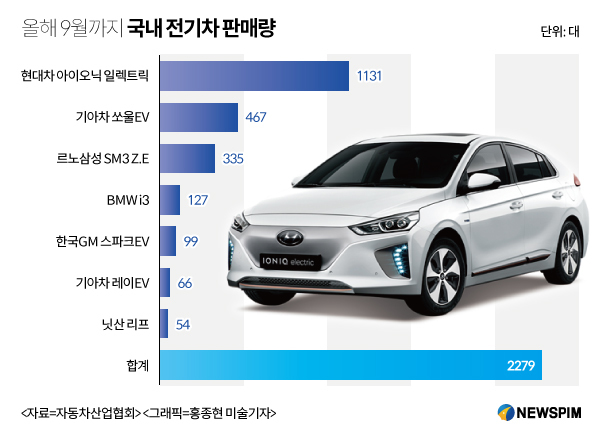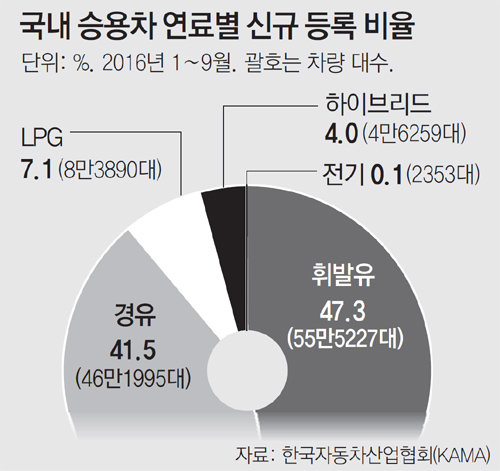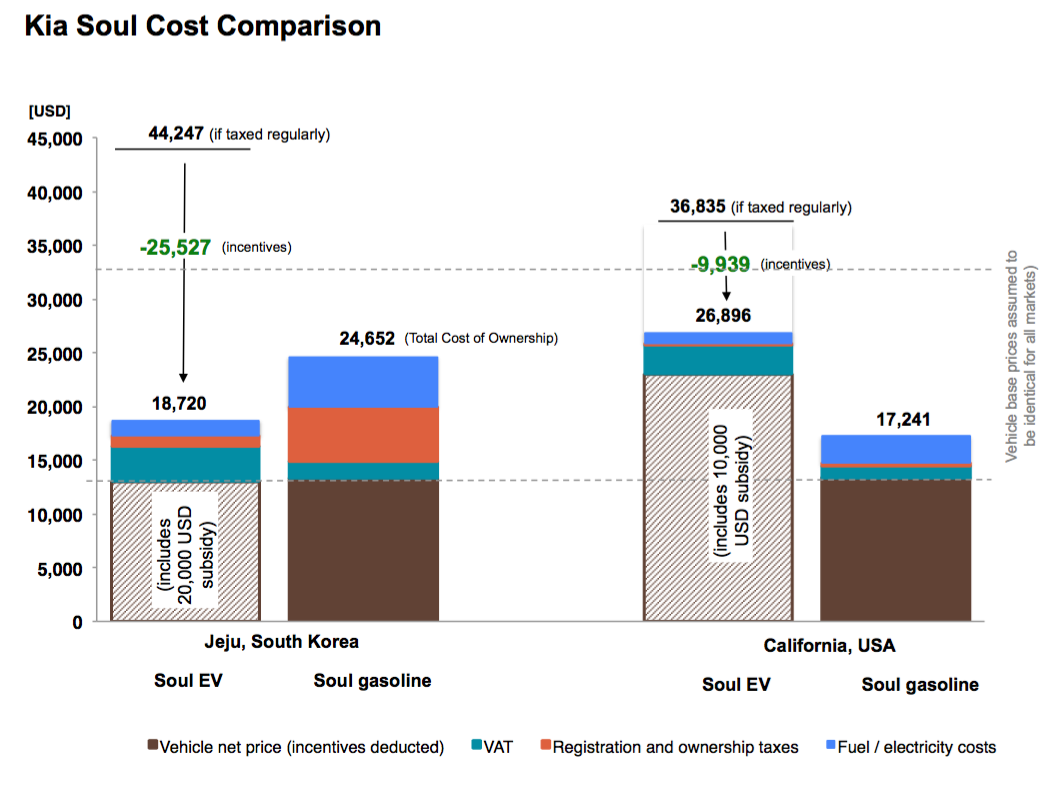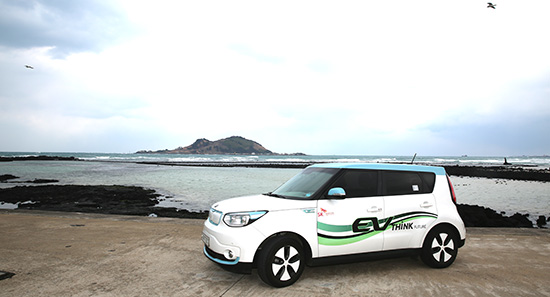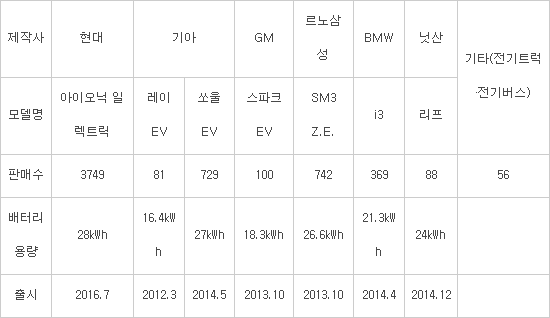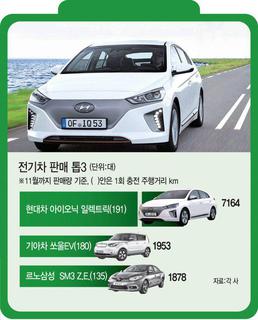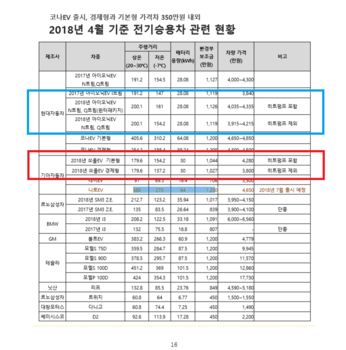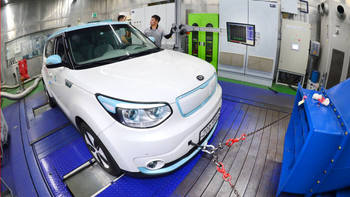-
From
Promoting electric vehicles in Korea
In Jeju, the total cost of owning a Soul EV ($18,720) is 55% lower than the total cost if it was taxed regularly, and 18% cheaper than the gasoline Soul. As shown in the figure below, purchasing and operating a Soul EV is much cheaper in Jeju than in California. The strong government support for EV development attempts to compensate for the price disadvantages of BEVs.
-------------------------------------------------------
The Cumulative total of EVs on the road in Jeju as of Sep 2016 was 3608. Still more than 50% of all EVs in Korea ~6500.
The 6000 I_oniq Electric to be bought as rental cars will approximately double the EV count.
These numbers for Jeju must be a few months earlier. - http://www.econovill.com/news/articleView.html?idxno=303646
Kia Soul EV 1133, (31.4 %)
Renault Samsung sm3 ZE 1066, (29.55 %)
Hyundai I_oniq Electric 548, (15.19 %)
Kia Ray 312, (8.65 %),
BMW i_3 287, (7.95%)
Nissan L_eaf 149, (4.13 %)
-------------------------------------------------------
November sales data from - http://news.mtn.co.kr/newscenter/news_viewer.mtn?gidx=2016120910574157825
After a fairly dismal year for EV sales in Korea, sales have picked up a bit in the late two months.
The Kia Soul EV and Samsung SM3 have been selling off old inventory at greatly reduced prices.
The I_oniq EV got a boost from a 6,000 car order from the rental companies.
Totals for the year are now - all EVs 4270
Hyundai I_ONIQ Electric - 2565
Kia Soul EV –708
Renault Samsung SM3 – 533
-------------------------------------------------------
In November it looks like all the batch of 1000 I oniq Electric rental cars went to Jeju.
-------------------------------------------------------
The Cumulative total of EVs on the road in Jeju as of End 2016 was 6,521. Now more than 60% of all EVs in Korea 10,855.
The last 3 months saw 3,000 new EVs on the island. Almost all rental cars. http://www.jejuilbo.net/news/articleView.html?idxno=41197
And they are not all I_oniq EVs
The final 2016 sales figures






